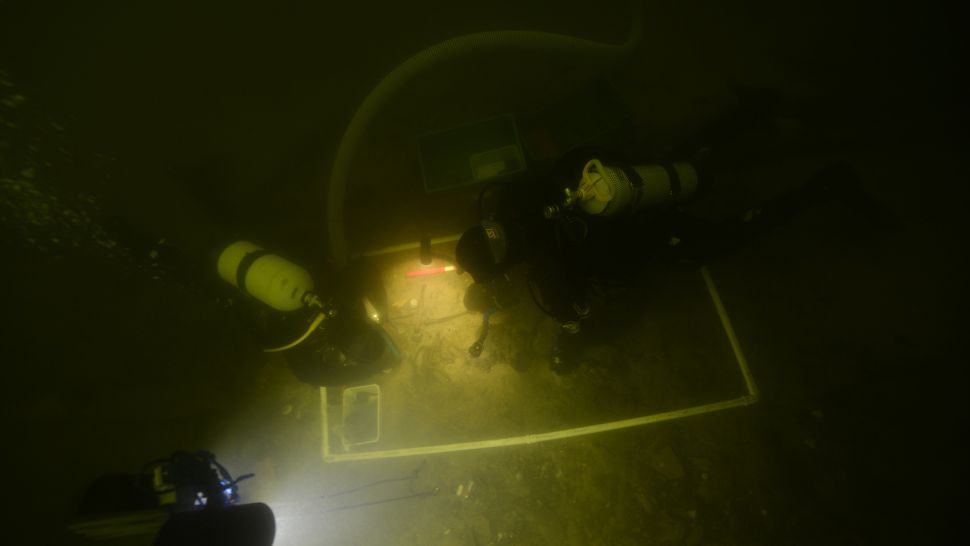Medieval soldier found with sword and knives at the bottom of a Lithuanian lake
Middle Ages more than 500 years ago The soldiers’ bodies settled on the bottom of a lake in Lithuania, covered beneath mud for decades. Well, those submerged ruins have finally been discovered.
During the underwater inspection at the old Dubingiai Bridge on Asbeya Lake in eastern Lithuania, the skeleton was found. But skeleton Archaeologist Elena Plankenaite, a researcher at Klaipeda University in Klaipeda, Lithuania, said the scene was not a burial because it lay beneath a layer of sand and silt.
According to Baltic News Service (BNS). Rather, the stream may have deposited sediments covering the ruins over time.
Scientists at the Vilnius University School of Medicine in Vilnius, Lithuania, examined the body and reported that the person was a man and died in the 16th century, but according to BNS, it is still unknown why he died.
Weapons and other items recovered from the bottom of the lake near the body suggest the military status of the dead man, Pranckėnaitė told Live Science in an email.
War-related human burials were previously excavated throughout the region, but this is the first time medieval soldiers have been found underwater in Lithuania, said Pranckėnaitė.
The Dubingiai Bridge, one of the longest wooden bridges still in use in Lithuania, was built in 1934 and its deteriorated beams are now the representative of the TEC infrastructure that oversees the Lithuanian Department of Transportation repair projects. It has been replaced with a pillar made of. communication, Said in a statement.

According to the statement, archaeologists worked with amateur divers to conduct a survey, which found the ruins at a depth of 30 feet (9 meters) while inspecting the support system for the wooden bridge.
Divers excavate medieval ruins and weapons from the bottom of Lake Asbeya near the Dubingiai Bridge. Earlier research in 1998 revealed that another bridge dating back to the 16th or 17th century was once in the same place. Pranckėnaitė added when a medieval soldier died.
“For now, we believe that these discovered human bodies may be associated with the former bridge leading to Dubingiai Castle on the hills on the shores of Lake Asbeja.” She said.
Finding the remains of a soldier was a great surprise, but equally surprising was the amazing preservation of the skeleton and relics.
The diver recovered the leather boots with spurs. Leather belt with buckle. Iron sword; “And two knives with a wooden handle,” Pranckėnaitė wrote in an email.
A team of archaeologists, anthropologists, and historians at the Lietuvos National Museum is currently working on the preservation and interpretation of objects.
The findings and data are “really” fresh “and still need to be analyzed carefully,” said Pranckėnaitė. “I hope to’tell the story of this soldier within at least a year.”





